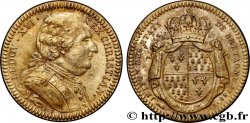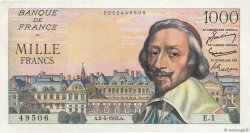fjt_072143 - BRETAGNE (ÉTATS DE...) Jeton AR 29, États de Rennes 1728
недоступный.
Товар уже продан в нашем интернет-магазине
Цена: : 60.00 €
Товар уже продан в нашем интернет-магазине
Цена: : 60.00 €
Тип Jeton AR 29, États de Rennes
Дата: 1728
Металл: silver
Диаметр: 29 mm
Ориентация осей монеты: 6 h.
Век: cannelée
Комментарии о состоянии
De petites marques de manipulation avec une usure faible sur les reliefs sinon un très bel exemplaire
Ссылки в каталоге: :
Лицевая сторона
Аверс: легенда: LUD. XV. REX - CHRISTIANISS..
Аверс: описание: Buste à droite en habit, avec cravate et grand cordon, au-dessous signature DU VIVIER. F..
Аверс: перевод: (Louis XV roi très chrétien).
Обратная сторона
Реверс: легенда: URBS RHEDONUM INCENSA RESURGENS. ; À L’EXERGUE COM. ARM./ 1728.
Реверс: Описание: La ville de Rennes tourelée à gauche, présentant un plan au roi ; elle pose la main gauche sur les armes de la ville ; sous leurs pieds REST. SUO..
Комментарий
Le revers fait référence à la reconstruction de la ville suite à l’incendie du 23 septembre 1720 qui ravage durant six jours environ 900 maisons du centre-ville. Sous les ordres du maire Rallier du Baty, la reconstruction est confiée à l’ingénieur Isaac Robelin et sera réalisée par Jacques Gabriel, premier architecte du roi. Le centre aux ruelles tortueuses laissera alors la place à des voies à l’équerre, la pierre remplace comme matériau de construction le bois qui est interdit.
The reverse refers to the reconstruction of the city following the fire of September 23, 1720, which ravaged approximately 900 houses in the city center for six days. Under the orders of Mayor Rallier du Baty, the reconstruction was entrusted to the engineer Isaac Robelin and was carried out by Jacques Gabriel, the king's first architect. The center with its winding streets then gave way to square roads, and stone replaced wood, which was banned, as a building material.
The reverse refers to the reconstruction of the city following the fire of September 23, 1720, which ravaged approximately 900 houses in the city center for six days. Under the orders of Mayor Rallier du Baty, the reconstruction was entrusted to the engineer Isaac Robelin and was carried out by Jacques Gabriel, the king's first architect. The center with its winding streets then gave way to square roads, and stone replaced wood, which was banned, as a building material.








 Cообщить об ошибке
Cообщить об ошибке Распечатать страницу
Распечатать страницу Отправить мой выбор
Отправить мой выбор Задать вопрос
Задать вопрос Consign / sell
Consign / sell
 Информация
Информация















